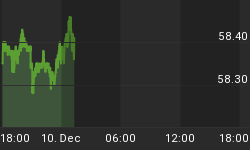
Yellen Looking For Consensus
Like Ben Bernanke, Janet Yellen appears to be a leader in search of consensus. After artificially holding down interest rates and pumping gobs of money into the financial system, the Fed faces the near-impossible task of trying to keep the financial markets fairly tame during a shift in interest rate policy. From The Wall Street Journal:
If the central bank moves too soon to raise interest rates, it could choke off the recovery. But if it waits too long, it risks encouraging too much inflation or otherwise becoming a source of financial instability. Some of the Fed's strongest critics say it has already waited too long.
The Key Fed Passage
The passage below, from the Fed's July FOMC statement, is what is referred to as guidance. This Wednesday at 2:00 p.m. EDT the market will be looking for possible changes to the two most important words below: "considerable time".
The Committee continues to anticipate, based on its assessment of these factors, that it likely will be appropriate to maintain the current target range for the federal funds rate for a considerable time after the asset purchase program ends, especially if projected inflation continues to run below the Committee's 2 percent longer-run goal, and provided that longer-term inflation expectations remain well anchored.
The probability of a bullish reaction to this week's Fed statement will increase if the passage above is not changed in a meaningful manner this week. Conversely, the probability of a bearish reaction will increase if the passage above is altered in a way that hints at "a rate hike is coming relatively soon".
Pros And Cons Before The Fed
Since it is the market's reaction to Wednesday's Fed statement that matters most, it is prudent to review both the bullish and bearish cases before the fun begins. This week's stock market video looks at cracks, concerns, and support.
Investment Implications - The Weight Of The Evidence
Following Wednesday's Fed festivities, if the S&P 500 can close above 1998, that would be a good step for the economic and stock market bulls. Conversely, if the S&P 500 finishes Wednesday's session below 1984, concerns would remain about the possibility of further downside in equity prices.

Our market model saw enough deterioration last week to call for an incremental reduction in our exposure to stocks (SPY) and bonds (TLT). We still own stocks and bonds; just less than we did last Thursday. The flat 50-day moving average in the S&P 500's chart above tells us the market is in an indecisive state. It is not uncommon to see big moves (up or down) from a "flat 50-day" look. Therefore, we will maintain a highly unbiased and flexible stance this week. The market will guide us if we are willing to listen.
















